In the latest instalment of Beat Dissected, we construct a big room monster.
Beat Dissected is a regular series in which we deconstruct drum patterns, showing you how to recreate them in any DAW. Just copy our grid in your own software to recreate the loop.
Here’s the beat we’re building today:
To download the samples for this beat, click here. The samples are provided on a completely royalty-free basis. They may not be sold or given away, either in whole or in part.
You must register for a free Attack account and sign up to receive our newsletter in order to download the samples. New members can register here. Existing members can log in here.
Spec
Tempo
120-125bpmSwing
60-70%Sounds
909-based with lots of layering.Step 1
To start this beat, we’ve layered multiple samples for the kick. A good place to start is a TR-909 sample. We’ve run it through some heavy compression as well as some tape saturation, then blended it with a deeper kick using an 808 sample.
To add character to the kick, you can then layer with something a little different on top. Samples from less obvious drum machines such as the Boss DR-202 or the Alesis HR-16 work well, but you can use any kind of snappy kick with lots of high-end character. A 707, LinnDrum, or DMX-style kick could work as well. We’ve also layered some vinyl hiss and a shaker, mixed very low with the kick sounds for extra character.
The kick pattern is a simple four-to-the-floor beat.
Step 2
Like the kick, the clap requires a good amount of layering and processing. Our clap is based on a 909 sample layered with a couple of other clap samples and a touch of vinyl crackle. We’ve also used a tambourine sample to bring out the high end of the sound. To add a little depth and character to the hit, we’ve used a Lexicon reverb plugin then resampled the reverb tail into the clap.
The clap pattern is very simple, triggering on the 2nd and 4th beat of each bar.
Step 3
This beat contains four different hi-hat sounds, which is quite an unusual approach but helps to add interest and character to the groove. The first three hats are all variations on open hat sounds. For the first hat, the amp envelope is adjusted to keep it tight, while grit is added by bit crushing very slightly.
This hat plays mainly on the offbeats, plus a few additional ghost hits at lower velocity to add groove. The pattern now starts to take shape and the strong swing can be heard on the 16th notes.
Step 4
The second hat is another slightly open sound with plenty of grit, but a different overall tone to the first.
Note that this hat sound also triggers on the offbeats, so it must not be assigned to the same mute group as the first hat. The reason we haven’t just layered the two together is that this second hat plays different ghost notes.
Step 5
The third and final open hat sound is a classic 909 sample, run through a high-pass filter so that it mainly bolsters the high end of the first two hat sounds. This one doesn’t play any ghost hits, simply triggering on the offbeats.
Step 6
The closed hat is again based on a 909 sample, but this time we’ve totally reworked the tone, character and pitch of the sound by running it through a reverb, some tape saturation and then through an MPC60 for some lo-fi grit.
We’ve then adjusted the amp envelope for a short decay, giving a very tight sound. The closed hat pattern fills in some of the gaps left around the open hats but also reinforces the two open hat hits in the second half of each bar.
Step 7
There are two snare sounds in this beat, both sitting quite low in the mix to emphasise the swing around the third kick drum of the bar. The samples are both of acoustic snares with slightly different but complementary tones.
Step 8

Finally, as an optional extra, we’ve also included a rhythmic vocal sample to add some more character to the beat. We’ve gone through some spoken word speech files, carefully selecting certain vocal phrases with character and dynamic. After cutting out interesting syllables we’ve nudged the sounds backward and forward until we found a groove to work with the rest of the beat. The vocal loop was then run through a Lexicon plate reverb plugin and SoundToys’ Decapitator for a little tape saturation. EQ has been used to scoop away the bottom end of the vocal loop so as not to take up too much low- or mid-range bandwidth. The processed loop is resampled and dropped back into Ableton as a single audio file so it can be triggered independently.
To download the samples for this beat, click here. The samples are provided on a completely royalty-free basis. They may not be sold or given away, either in whole or in part.
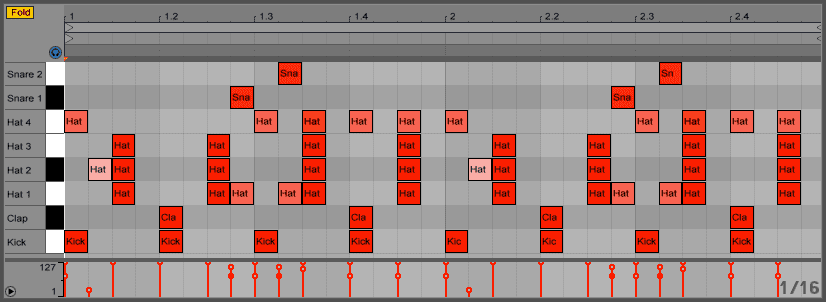
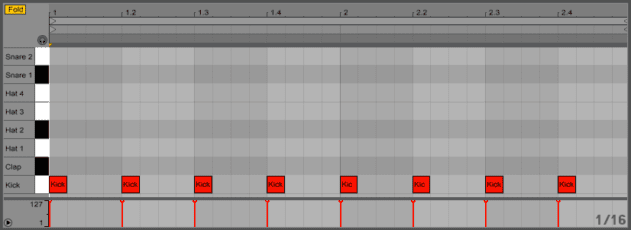
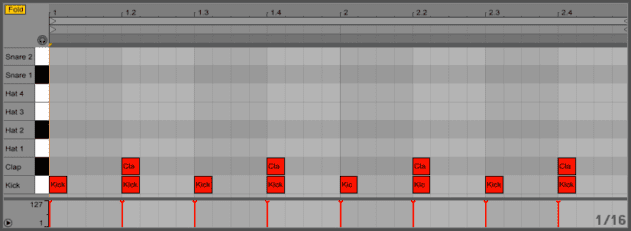
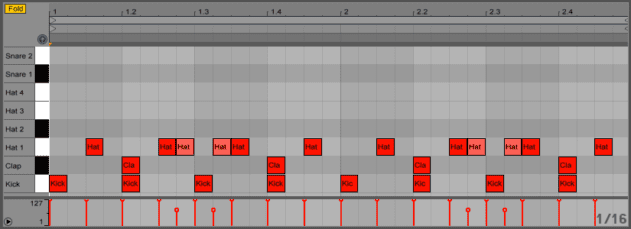
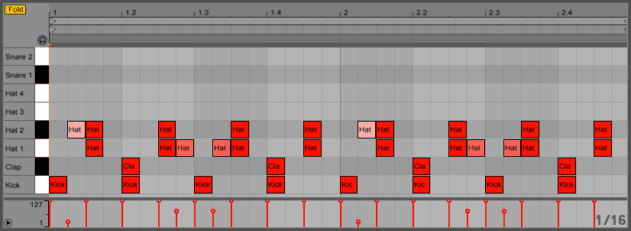
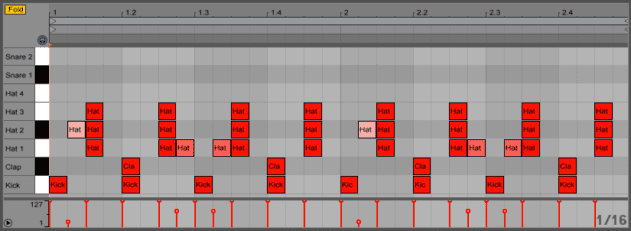
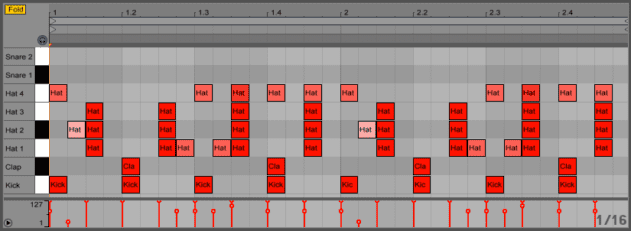
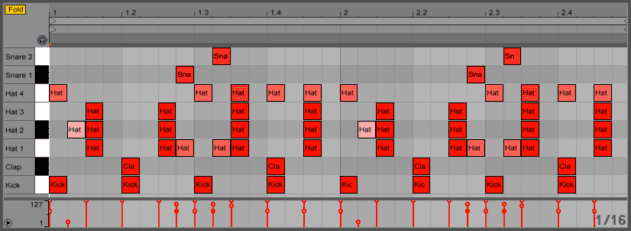
07.11 PM
im sorry but this sounds like Uk-Garage to me
11.47 PM
it would be helpful if you could show the layering process. give audio examples of the individual layers of the kick and clap, so that people can get an insight into how to choose their layers.
12.27 AM
Wow, never would have thought to use four hi-hats just to make a groove. Full of incite.
Curious as to what sort of toms would be thrown in the mix and what parts of the groove they would be used to emphasize.
11.55 AM
Tom – if you download the samples it should make it a bit clearer how the layering works.
James – we’d probably omit the vocal loop and start with 909 tom samples to carry on the 909 theme. It’s already quite a busy groove but with the vocal line removed there’d be some space around the second and fourth beats of each bar (where the clap sits) where you could probably find some room for a tom pattern.
03.52 PM
great ! 🙂
merci à l’équipe d’attack !!!!!
08.17 PM
Don’t know what kind of UKG Rick’s listening to!!
09.37 AM
Keep going, thank you
11.38 AM
So wants the difference between this beat & the beat in the Main Room House tutorial. I thought Mainroom House & Big Room House were the same genre.
Can anyone tell me the difference please.
09.21 PM
And with this cheap sound you want to make a tutorial for others ?.
hahahahahahahaha….
trust me …… leave this to the pros… this is the worst i ever heard
06.02 PM
@Dannic .. This isn’t their first tutorial.. Have you seen the list of other beatsdissected? And as a guide line, it has been very helpful. Go hate some where else douchebag
02.38 PM
Hi, this is Luke Sega, music- maker and baker from Germany.
I dont wanna be important here, but my tracks been already respected from an dutch artist, who had a big number one hit – single in uk.
Anyway: This tutorial is good! When u :
a) really interessted in making beats!
b) not a hater trollin in the net!
Btw have realized that attackmagazine is one of the best site providing high quality tutorials! FOR FREE!
thanks attackmagazine!
i love you guys! keep up the great work!
Luke Sega (soundcloud: luke sega)
09.51 AM
Thanks attackmagazine! Very interesting tutorial! Just like the others!
But i’m having trouble finding these vocal samples. Does anyone know any tips on finding/creating them?
Kind regads,
Raf
09.31 AM
who cares what genre it is? why are people obsessed with classifying everything… it’s music. don’t take the fun out of it
03.36 PM
Still can’t get the groove right. Which groove pool thing do you guys use?